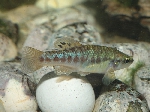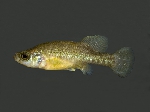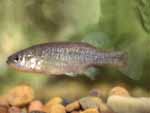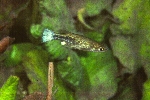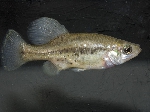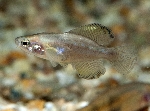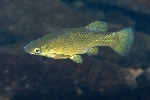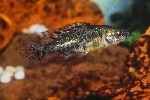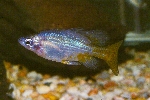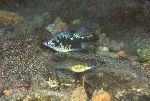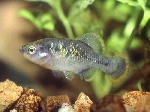Zur Fortpflanzungsbiologie von Hochlandkärpflingen
By Greven, H.
Beiträge zur Biologie und zum Artenschutz der Hoch land kärpflinge, 176-216 2013
" A short review of the reproductive biology of goodeids is given with notes on gaps of knowledge that may be filled with a low scale of technical processing. All goodeids currently known arc gonochoristic. The early development of the initially paired gonads corresponds to that in other teleosts. The testes produce sperm that beccome packed as spermatozeugmata; the ovaries produce oocytes poor in yolk, which become fertilized in the follicle. Many goodeids arc sex-dimorphic often shown by a larger size or females and an intense colouring of males. In addition. males have a modified anal fin, whose anterior lobe does not act as intromittent organ, but obviously is involved in the formation of a pocket that may prevent sperm loss during copulation. Spermatozeugmata obviously were powerfully ejected by musc1es surrounding the sperm duct and the urinary canal. Courtship is variable among species. It appears very simple in Zoogoneticus tequila and very complex. e.g. in Xenotoca species. A deeper comparative analysis is missing. Concerning the developmental stages or embryos evacuated in the ovary, statements in the literature begin from embryonic disk to embryos beginning with the formation of trophotaeniae. Perhaps species-specific differences exist. The longest developmental phase, however, takes place in the lumen of the ovary. A kind of superfetation has been noted in some goodeid species, which, however, is poorly studied. If really present, this superfetation is highly ineffective due to the fact that the different developmental stages occur together in the ovary lumen, instead in follicles like in Poeciliids. All goodeids studied so far arc matrotrophic viviparous and all including Ataeniobius toweri develop trophotaeniae, i.e. rosette or band-like anal extensions that surround the anus of the embryos and are largely covered by absorbing gut cells. Intensity of allocation of nutritive molecules differs greatly among species. This is suggested by the different structure of trophoaeniae (highly reduced in Ataeniobius toweri, considerably long in Ameca splendens), the different equipment with an enocytotic apparatus to engulf macromolecules and the variable increase of dry weight during development. Some goodeids appear to practice adelphopagy, i.e. intraovariun cannibalism. It is speculated that this phenomenon is associated with small food availability of the female during pregnancy. Altogether future studies of the reproductive biology of goodeids should pay more attention to the differences between the species "
Classification: Physiology and diseases.
Language: German
Reference in bibliography for species (37)
Greven, H.. 2013. "Zur Fortpflanzungsbiologie von Hochlandkärpflingen". Beiträge zur Biologie und zum Artenschutz der Hoch land kärpflinge. 176-216 (ffm00749) (abstract)



